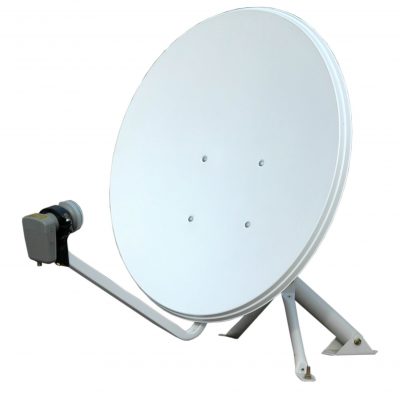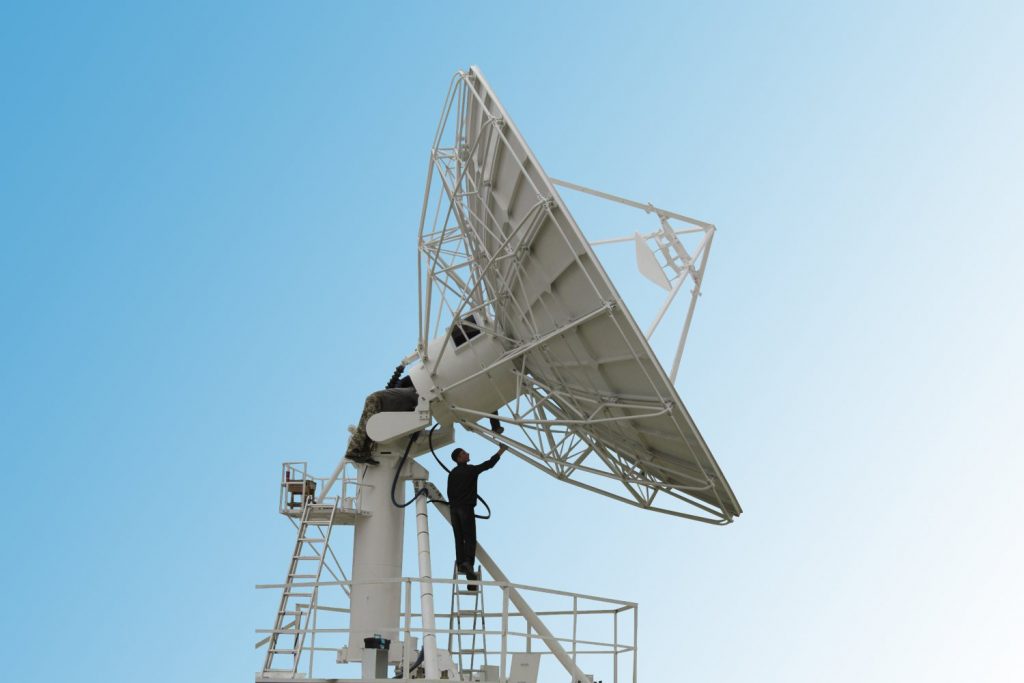Ku-Band is used typically for consumer direct-to-home access, distance learning applications, retail and enterprise connectivity. The antenna sizes, ranging from 0.9m -1.2m (~3ft), are much smaller than C-Band because the higher frequency means that higher gain can be achieved with small antenna sizes than C-Band. Ku-Band– uplink 14 GHz; downlink 10.9-12.75 GHz
Ku-Band Vsat Satellite Services
This unique service lifts existing and new customers to the next level of throughput enhancement over existing networks. Ku-Band introduces committed/matched information rate (CIR/MIR) – based data packages.
Now SOHOs, Cyber Cafés, SMEs, Remote Resorts, Vessels and other users can enjoy affordable and top-quality internet services with an amazing browsing experience.
MegaSatCom’s VSAT Connectivity with Ku-Band has been the band of choice namely for Direct-To-Home services, consumed by many internet users throughout the islands of Indonesia and around South East Asia. Ku-Band became successful because it uses small antennas. MegaSatCom has already proven its strength and ensures the largest and fastest deployment in South East Asia.
Advantages of MegaSatCom Ku-Band VSAT Satellite Internet Services
- Operate Teleport.
- 24×7 NOC Services and Support
- Experienced VSAT Engineers
- Cost Effective Broadband Connectivity
- CAPEX is Cheaper than C-Band
- Flexible Bandwidth Options
- High Capacity Links and Global Satellite Platform Lay-Out
- Reliable Alternative to Terrestrial Networks
- Cost-Effective, Easy to Scale and Deploy
- Multiple Platforms, Such as iDirect, NewTech and Others
- Dedicated or Shared Bandwidth Allocation and Cost Effective
- Very Low to Not Affected by Rainfade
- Service Availability 99.95%
- 24/7 Multilingual Help Desk and Support

C-Band and Ku-Band Comparison
Which of them is better & Why?
Many mobile operators nowadays are using Very Small Aperture Terminal (VSAT) to provide coverage in remote areas & enhance their network coverage. VSAT technology needs a frequency for operation, as any other mobile communication technology. The two main bands for VSAT communications are C-Band and Ku-Band. The question is which of them is better and when to use each of them? Here you will find a C band Ku-Band Comparison.
C-Band and Ku-Band have their pros & cons. We will discuss the pros and cons of the two frequency bands here to provide a clear idea of each one’s suitable use.
C-Band
International Telecommunication Union (ITU) is the worldwide frequency regulator. ITU initially defined C-Band to be the first satellite band and its frequencies range from 4Ghz to 8Ghz. This range of frequency is also used widely by terrestrial microwave backhaul links nowadays, especially because the sub 6GHz band is free of license in many countries all over the world. This resulted in a great interference problem between C-Band and terrestrial backhauling links. Thus, ITU started to define new frequency bands as Ku-Band.
On the other hand, signals in C-Band are less focused compared to higher satellite frequencies such as Ku-Band. This is due to the longer wavelength in C-Band. Less focused signals means that these signals are less affected by rain (a phenomenon known as rain fade of satellite signals). The attenuation on C-Band signal due to rain fading ranges from 0.4 dB to 1 dB only. Moreover, these less focused signals can provide wider range of coverage. However, these signals need larger dish size ( e.g. 2.4 , 3 or 3.7 meters in diameter), so that they can be received from the satellite. Thus, C-Band requires more expensive equipment which list generally larger and heavier therefore more expensive to freight to and from site compared to Ku-Band (more Capital Expenditure “CAPEX” and higher freight costs).
Ku-Band
Unlike C-Band, Ku-Band frequencies are dedicated for satellite communication only. This solves the problem of interfering with terrestrial microwave backhaul links. Moreover, Ku-Band is characterized by its high powered signals compared to C-Band. Thus, smaller dishes can be used to achieve the same distance as C-Band and the Ku-Band radio transmitter also requires less power.
Normally a 1.2 or 1.8 meter dish is used for Ku-Band applications. This can save great CAPEX and lowers the equipment freight costs dramatically compared to C-Band which makes Ku-Band suitable for smaller more cost effective networks. One of the previous main downsides with Ku-Band in high rain fall areas was that, the older Ku-Band equipment was more sensitive to rain fade and rain attenuation which reduced the bandwidth during very high rainfall to virtually nothing until the rain subsided.
To mitigate rain fade MegaSatCom utilizes the latest Ku-Band technologies and equipment which mitigate rain fade in the harshest rain conditions allowing for a continuous internet bandwidth flow.
Ku-Band is also one of the best satellite options for vessel communications allowing for the vsat to be installed over a smaller deck footprint while allowing high bandwidth throughput along with VoiP capabilities around the globe.
When to use C-Band and Ku-Band
C-Band
- C-Band is preferred in some locations where rainfalls are heavy, like the tropical regions of South East Asia and Indonesia.
- From a commercial point of view, C-Band is better for satellite applications that need larger bandwidth. This is because the license fees for C-Band bandwidth are cheaper than Ku-Band (less Operational Expenditure “OPEX”)
Ku-Band
- Ku-Band is preferred where there is a limited area for installation, because a smaller dish is used and it is easy to install.
- From a commercial point of view, Ku-Band is better for satellite applications that need smaller bandwidth, equipment is cheaper and weighs less so freight costs are much lower than C-Band satellite dishes.
Ku-Band Vessel VSAT Auto Pointing and Stabilized Antenna

Summary
Both C-Band and Ku-Band have their uses in satellite applications. Both of them can provide accepted QoS and communication speed depending on which applications the consumer would like to utilize.
Further consultation with MegaSatCom’s highly skilled engineers will ensure the best overall VSAT Satellite design solution for application requirements and budget, with quality and safety as top priority.

